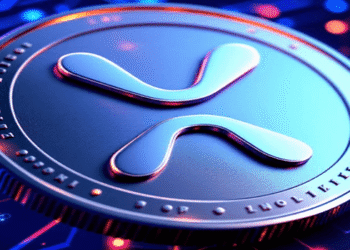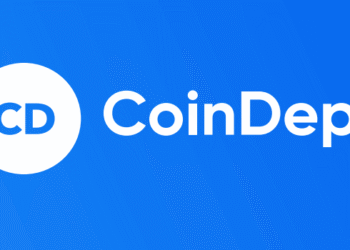Introduction to Ethereum
Ethereum is a decentralized blockchain platform that revolutionizes how applications and financial transactions are conducted by enabling smart contracts and decentralized applications (dApps). Proposed by Vitalik Buterin in 2013, Ethereum was launched in 2014 through a public crowd sale, quickly becoming the second-largest cryptocurrency by market capitalization. Its native token, Ether (ETH), priced at approximately $2,460.84 USD as of June 25, 2025, is used for transactions, powering dApps, and as a store of value (
Ethereum Price).
Ethereum’s blockchain operates on a peer-to-peer network, eliminating intermediaries like banks or centralized authorities. Unlike Bitcoin, which primarily serves as a digital currency, Ethereum’s versatility supports a wide range of applications, from decentralized finance (DeFi) to non-fungible tokens (NFTs). Its transition to a proof-of-stake (PoS) consensus mechanism in 2022, known as Ethereum 2.0, reduced energy consumption and introduced staking, enhancing its scalability and sustainability (
Proof of Stake).
Key Features of Ethereum
- Smart Contracts: Self-executing contracts with terms coded directly, automating trustless transactions without intermediaries.
- Decentralized Applications (dApps): Applications running on Ethereum’s blockchain, supporting services like gaming, social platforms, and DeFi.
- Non-Fungible Tokens (NFTs): Unique digital assets, often created and traded on Ethereum, driving cultural and economic innovation.
- Proof-of-Stake (PoS): Validators stake ETH to secure the network, earning rewards, making Ethereum more energy-efficient than its former proof-of-work (PoW) system.
- Supply Management: A “burn” mechanism destroys a portion of transaction fees (gas), occasionally making ETH deflationary. Post-Dencun upgrade (March 2024), the supply is slightly inflationary, growing 0.3% from 120.07 million to 120.43 million ETH by November 2024 (Ethereum Supply).
Ethereum’s robust ecosystem and continuous upgrades position it as a cornerstone of blockchain technology, offering a platform for innovation beyond traditional cryptocurrencies.
Should You Invest in Ethereum?
Investing in Ethereum offers opportunities due to its technological advancements and widespread adoption, but it carries significant risks. Below is an analysis of the pros and cons, supported by expert insights, to guide your decision.
Pros of Investing in Ethereum
- Smart Contracts: Automate transactions, reduce costs, and enhance efficiency by removing intermediaries, driving DeFi and enterprise adoption (What is DeFi).
- Decentralization: A global network of nodes enhances security, reduces censorship risks, and protects against fraud (What is Blockchain).
- Wide Adoption: A large developer community and thousands of dApps, from DeFi to NFTs, ensure ongoing innovation and utility (Ethereum dApps).
- Interoperability: Supports token creation and dApp development, fostering growth in DeFi, NFTs, and other blockchain applications.
- Robust Security: PoS and cryptographic protocols make the network resistant to attacks, ensuring trust in transactions (Ethereum Security).
- Tokenization: Enables digital representation of assets like real estate or art, increasing liquidity and investment opportunities.
- Community and Ecosystem: An active community and supporting tools drive collaboration and growth (Ethereum Community).
Cons of Investing in Ethereum
- Scalability Issues: Network congestion during high demand slows transactions and raises gas fees, impacting usability (Ethereum Scalability).
- High Transaction Fees: Gas fees spike during peak times, making small transactions costly and less appealing.
- Complexity of Use: The ecosystem’s tools, wallets, and dApps require technical knowledge, deterring non-technical users.
- Regulatory Concerns: Global regulatory uncertainty, such as potential restrictions, could affect ETH’s value and adoption (Crypto Regulation).
- Security Vulnerabilities: Poorly coded smart contracts can be exploited, leading to financial losses (Smart Contract Risks).
- PoS Transition Risks: The shift to PoS introduced potential bugs or decentralization challenges, though largely mitigated by 2025.
- Environmental Concerns: While PoS reduced energy use, past PoW criticism lingers, influencing public perception (Ethereum PoS).
Expert Opinions
Some analysts predict Ethereum could surpass Bitcoin in market dominance due to its versatility and dApp ecosystem, with Ethereum 2.0 upgrades enhancing scalability and sustainability (
Ethereum Predictions). In 2023, Ethereum’s value grew significantly due to DeFi adoption and PoS improvements. Experts suggest a 1-2% portfolio allocation for high-risk-tolerant investors, emphasizing diversification and caution due to volatility (
Investing Guide).
Current Price and Performance
As of June 25, 2025, ETH is priced at $2,460.84 USD, below its all-time high of $4,878.26 but reflecting resilience (
Ethereum Price). Historical performance shows growth, with a 2023 surge driven by Ethereum 2.0 and DeFi. However, 2024 saw fluctuations, with a 1-year decline from $3,371.28 in June 2024 to $2,460.84, highlighting volatility.
Investment Strategy
- Understand the Technology: Learn about smart contracts, dApps, and PoS to make informed decisions (What is Ethereum).
- Assess Risk Tolerance: Only invest funds you can afford to lose due to ETH’s price swings.
- Diversify: Limit ETH to a small portfolio portion to mitigate risk.
- Stay Informed: Monitor upgrades like Dencun and regulatory developments.
- Secure Investments: Use reputable exchanges and wallets to protect ETH (Best Wallets).
| Aspect |
Pros |
Cons |
| Returns |
High potential (e.g., 2023 DeFi-driven growth) |
Volatile, with 2024 declines |
| Regulation |
Decentralized, no central control |
Global regulatory uncertainty |
| Security |
Robust PoS and cryptography |
Smart contract vulnerabilities |
| Utility |
Wide dApp and NFT adoption |
High gas fees during congestion |
How to Accumulate Ethereum
Acquiring Ethereum involves multiple methods, each with unique benefits and risks. Below are the primary ways to accumulate ETH.
Buying Ethereum
Purchasing ETH through exchanges is the most accessible method. Options include:
- Centralized Exchanges (CEXs): Platforms like Coinbase, Kraken, or Gemini allow fiat purchases (USD, EUR). They’re beginner-friendly but charge fees (0-4%) and offer less control (Buy ETH).
- Decentralized Exchanges (DEXs): Peer-to-peer platforms like Uniswap enable crypto-to-crypto trades. They’re cheaper and offer more control but require existing crypto and technical knowledge.
- Online Brokers: Platforms like Robinhood offer ETH alongside stocks. They’re simple but limit functionality (e.g., no staking or transfers).
Steps to Buy ETH:
- Select an Exchange: Choose based on fees, security, and ease of use.
- Create an Account: Complete KYC verification.
- Deposit Funds: Use bank transfers, credit/debit cards, or crypto.
- Place an Order: Buy at market price or set a limit order.
- Store Securely: Transfer ETH to a non-custodial wallet (Hardware Wallets).
Security Tips: Use two-factor authentication (2FA), avoid sharing private keys, and prefer hardware wallets like Ledger for long-term storage.
Staking Ethereum
Staking involves locking ETH to validate transactions on the Ethereum network, earning rewards. Since the 2022 PoS transition, staking is a key feature (
Stake ETH).
Staking Options:
- Solo Staking: Requires 32 ETH ($78,747 at current prices) and a dedicated computer. Offers full control but demands technical expertise and hardware ($700-$6,900).
- Staking Pools: Pool ETH with others for as little as 0.01 ETH. Rewards are proportional, but some pools lock funds in smart contracts.
- Staking-as-a-Service: Delegate ETH to providers like Coinbase. Convenient but less secure due to third-party trust.
Benefits:
- Passive income with an estimated 3.1% annual return (June 2025).
- Enhances network security and decentralization.
- Potential ETH price appreciation.
Risks:
- Locked ETH reduces liquidity during staking periods.
- Penalties or slashing for validator errors.
- Cybersecurity risks if using untrusted platforms.
Steps to Stake:
- Choose a Method: Solo, pool, or service-based.
- Set Up: For solo, install software and configure a node; for pools/services, follow platform instructions.
- Stake ETH: Transfer ETH to the staking contract or platform.
- Monitor: Ensure uptime to avoid penalties.
Other Methods
- DeFi Participation: Earn ETH through yield farming, liquidity provision, or lending on DeFi platforms like Aave or Compound. High returns but risky due to smart contract vulnerabilities.
- Airdrops and Bounties: Some projects distribute ETH for tasks or holding tokens, though yields are often low and scams are common.
- Mining: Post-PoS, mining is obsolete for Ethereum’s mainnet but may apply to layer 2 solutions or testnets, requiring specialized hardware.
Note: DeFi and airdrops require caution due to high risk of scams and losses.
Conclusion
Ethereum, pioneered by Vitalik Buterin, is a transformative blockchain platform enabling smart contracts, dApps, and NFTs. Its PoS system and deflationary mechanisms make it a compelling investment, but volatility, high fees, and regulatory risks demand caution. Buying ETH on exchanges is the simplest accumulation method, while staking offers passive income for those willing to lock funds. DeFi and airdrops provide alternative paths but carry additional risks. Thorough research, diversification, and secure storage are essential for navigating Ethereum’s complex ecosystem (
Ethereum Guide).
















